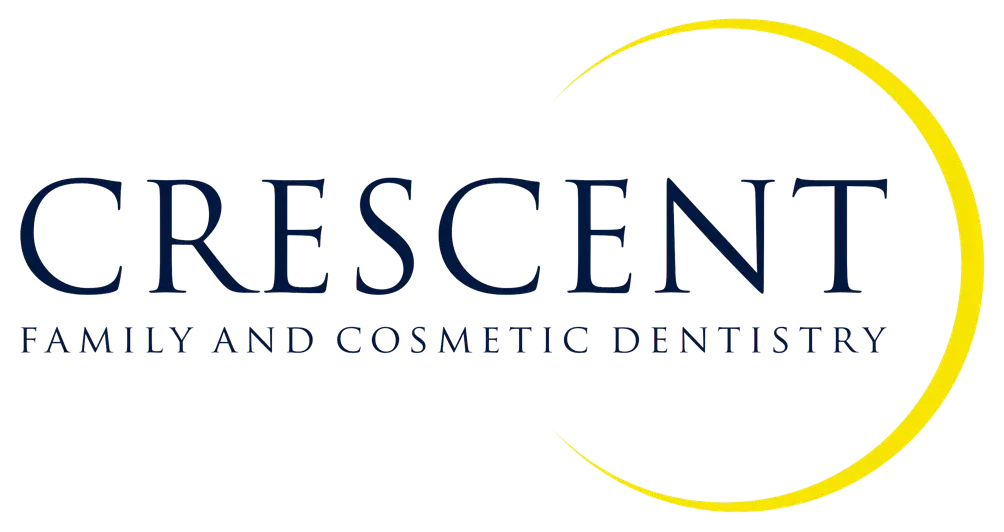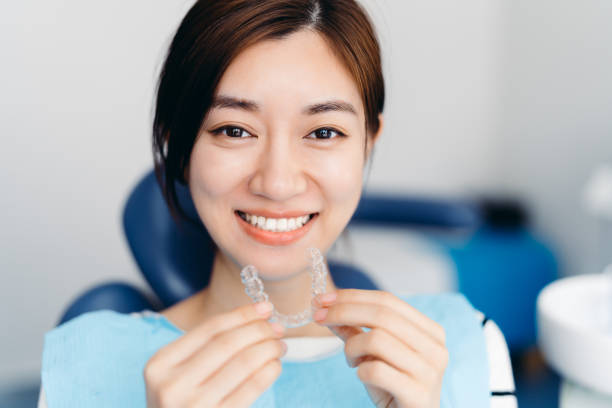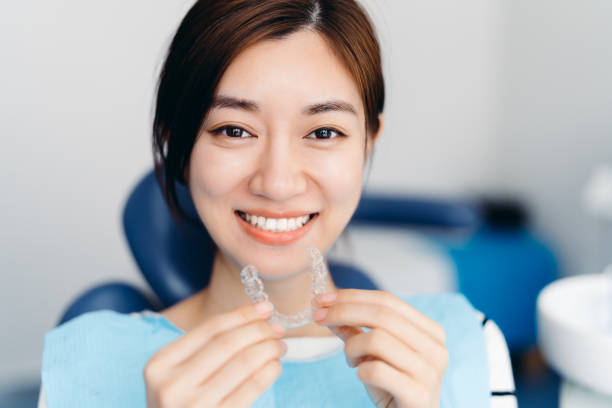From Clear Aligners to Tooth Extractions: Navigating Your Complete Dental Journey
A healthy, confident smile is more than just straight teeth—it reflects your overall oral health and well-being. With advances in dental technology and patient care, your journey to better dental health has never been more customizable or comfortable.
Whether you’re exploring clear aligners for straighter teeth or preparing for a necessary tooth extraction, today’s dental treatments are designed to fit your unique needs while minimizing discomfort and recovery time.
Modern dentistry offers tools and techniques that make your experience smoother, faster, and less invasive. But with so many options available, it’s important to understand the what, why, and how behind each step. From correcting alignment with invisible trays to removing problematic teeth, each part of your dental journey contributes to the long-term health and function of your smile.
What are the Benefits of Clear Aligners Over Traditional Braces?
Clear aligners have transformed the world of orthodontics. Instead of metal brackets and wires, patients now have the option of using nearly invisible trays to shift their teeth gradually. Here’s why clear aligners have become the go-to solution for many:
1. Discreet Appearance
Clear aligners are made from transparent plastic, making them far less noticeable than traditional braces. They’re ideal for adults and teens who want a more subtle way to improve their smile without drawing attention to their treatment.
2. Increased Comfort
The smooth, custom-fitted trays reduce irritation and don’t involve metal wires or brackets that can scrape the inside of your mouth. They’re gentle on gums and cheeks, making for a more pleasant daily experience.
3. Convenience and Flexibility
Aligners can be removed for eating, brushing, and flossing—something traditional braces can’t offer. This not only gives you freedom in your food choices but also makes it easier to maintain good oral hygiene.
4. Fewer Office Visits
With traditional braces, adjustments require regular orthodontic appointments. Clear aligners work in sets and typically only require occasional check-ins, freeing up your schedule while still delivering results.
5. Faster Treatment Times for Mild Cases
For mild to moderate alignment issues, clear aligners can straighten teeth in as little as 6 to 12 months, depending on your case. Traditional braces often take 18 months or more.
How Do Clear Aligners Impact Overall Dental Health During Treatment?
Clear aligners don’t just improve your smile—they help you maintain better oral health throughout your treatment.
1. Easier Cleaning
Because aligners are removable, you can brush and floss normally. This helps prevent plaque buildup, cavities, and gum disease—problems that are more common with traditional braces.
2. Lower Risk of Decay
Metal braces create spaces where food and bacteria can hide. Clear aligners eliminate that risk because they come off during meals, making it easier to rinse your mouth and avoid sugar and acid exposure.
3. Aligners That Support Gum Health
Straightening your teeth with aligners also makes it easier to clean between teeth long-term. Proper alignment supports gum health and reduces your risk of inflammation, recession, and periodontal issues.
4. Healthier Habits
Because aligners must be worn 20–22 hours a day, many people become more disciplined about oral hygiene. You’re more likely to brush after meals and avoid unnecessary snacking, improving your overall dental routine.
When Is It Necessary to Consider a Tooth Extraction During Dental Treatment?
Tooth extractions aren’t just for emergencies. Sometimes, removing a tooth is the best way to improve oral health and support orthodontic treatment.
1. Severe Overcrowding
If your mouth doesn’t have enough space for all your teeth to align properly, an extraction might be necessary. This creates room for the remaining teeth to shift into their ideal positions, especially when using braces or clear aligners.
2. Misaligned Bite
In cases of overbite, underbite, or crossbite, removing a tooth can help realign the bite and relieve pressure on the jaw. This leads to better chewing, clearer speech, and reduced discomfort in the long run.
3. Impacted Teeth
Teeth that are trapped below the gums—especially wisdom teeth—can cause pain, infection, or push other teeth out of alignment. Extracting impacted teeth prevents complications and supports a healthier mouth.
4. Damaged or Infected Teeth
Sometimes, a tooth is too damaged from decay or trauma to save. Extraction can stop the spread of infection and allow for a healthier restoration option, such as a bridge, implant, or partial denture.
How Can Dental Professionals Help Manage Pain and Discomfort During Extractions?
While tooth extraction might sound intimidating, today’s techniques are designed to make the process as pain-free and stress-free as possible.
1. Local Anesthesia
Before the procedure, your dentist will numb the area to prevent pain. You might feel some pressure, but you won’t feel sharp pain or discomfort.
2. Sedation Options
For more complex procedures or patients with dental anxiety, sedation is available.
- Oral Sedation: A pill taken before the appointment to help you relax.
- Nitrous Oxide: Also known as laughing gas, it eases nerves while keeping you awake.
- IV Sedation: Offers deeper relaxation and is often used for surgical extractions.
3. Gentle Techniques
Dentists today use modern tools and methods to ensure a smooth, quick extraction with minimal trauma to surrounding tissue. This shortens recovery time and reduces the risk of complications.
4. Post-Extraction Support
After your procedure, your dentist will provide clear instructions to manage any swelling or tenderness.
- Use ice packs for the first 24 hours.
- Stick to soft foods and avoid using straws.
- Take prescribed or over-the-counter pain relievers as directed.
- Keep the extraction site clean by rinsing gently with salt water after 24 hours.
Most patients recover within one to two weeks, with minimal discomfort when following proper care.
From First Visit to Final Results—Take Charge of Your Dental Journey
Whether you’re aligning your teeth with invisible trays or preparing for a necessary extraction, understanding your options helps you take charge of your dental health. Today’s dental technology makes procedures more comfortable, efficient, and tailored to your needs than ever before.
Orthodontic and restorative treatments are no longer one-size-fits-all. With personalized care plans, advanced imaging, and minimally invasive tools, dentists can offer solutions that support both short-term comfort and long-term success. What matters most is staying proactive—seeing your dentist regularly, asking questions, and following your treatment plan.
The journey to better oral health is a partnership between you and your dental team. With knowledge, commitment, and expert support, you can enjoy a strong, confident smile for life.
Your Healthier, Brighter Smile Begins Here—Visit Crescent Family and Cosmetic Dentistry of Columbia!
Ready to upgrade your smile and protect your oral health? Whether you’re considering clear aligners, exploring your options for extractions, or looking for a compassionate dental team to guide your care, Crescent Family and Cosmetic Dentistry of Columbia is here for you.
We combine advanced technology with personalized care to make your dental journey smooth and stress-free. Book your consultation today and take the first step toward a healthier, brighter, more confident smile.



